Excavations at Flag Fen on the outskirts of Peterborough revealed details of a wooden platform and post alignment that stretch for nearly a kilometre across the fen. These were built up between 1350 and 950BC and are of international significance. Due to the waterlogged nature of this part of the fenland, this unique monument has been remarkably well preserved. Similar preservation conditions exist in the Witham Valley as confirmed by the discovery of an Iron Age timber causeway at Fiskerton near Lincoln.
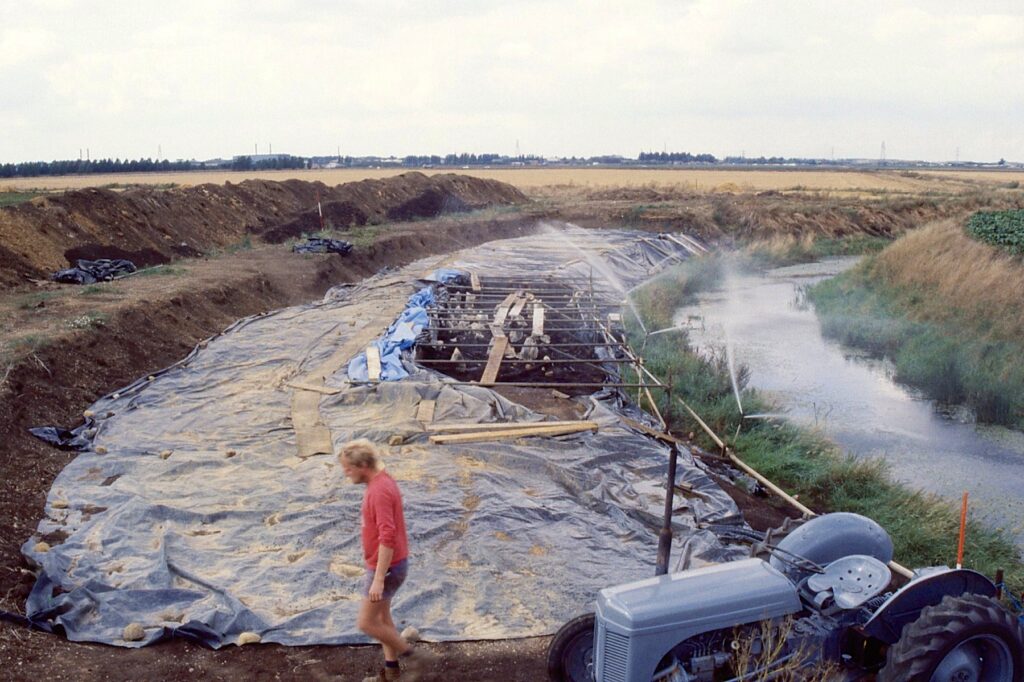
It is believed that the post alignment consists of 60,000 vertical timber and 250,000 horizontal pieces of wood, spanning the wet and marshy fen to meet a droveway on dry ground at each end. All the pieces of wood had been worked and shaped with tools.
Within the structure, many hundreds of metal, stone and bone artefacts have been found. These were deliberately placed. Furthermore, excavations have uncovered large amounts of animal bone (sheep, cows, pigs) showing signs of butchery, perhaps from feasting.
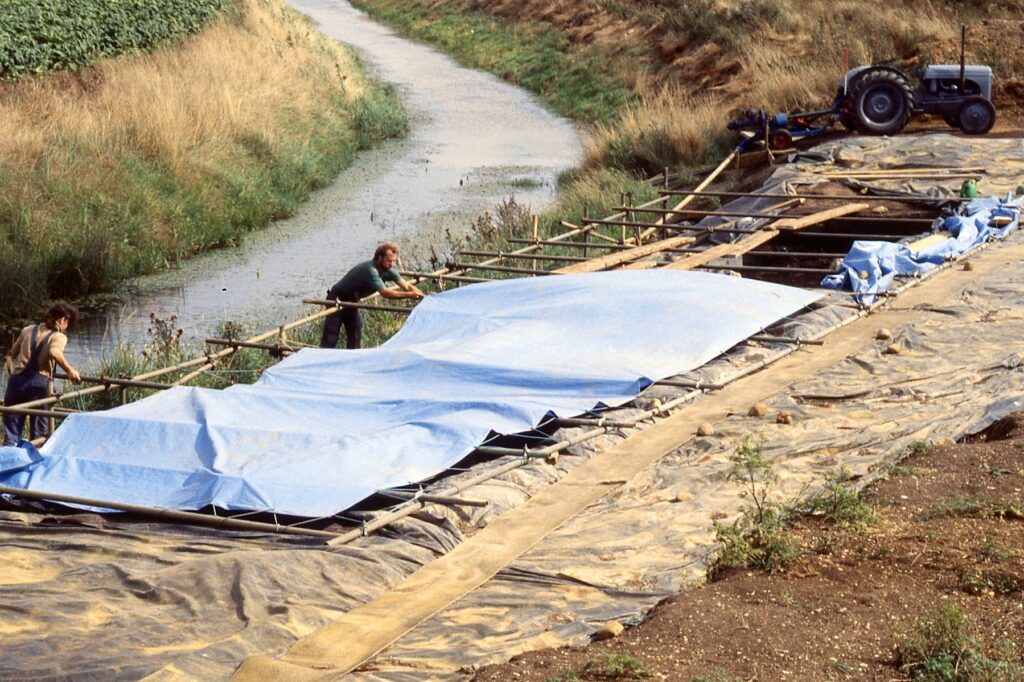
Metalwork was placed into the waters as ritual offerings to the gods or spirits by our prehistoric ancestors. The function of the structure is uncertain, it have been a boundary and defensive structure protecting the valuable resources of the fen or a bridge to drive cattle across the fen.
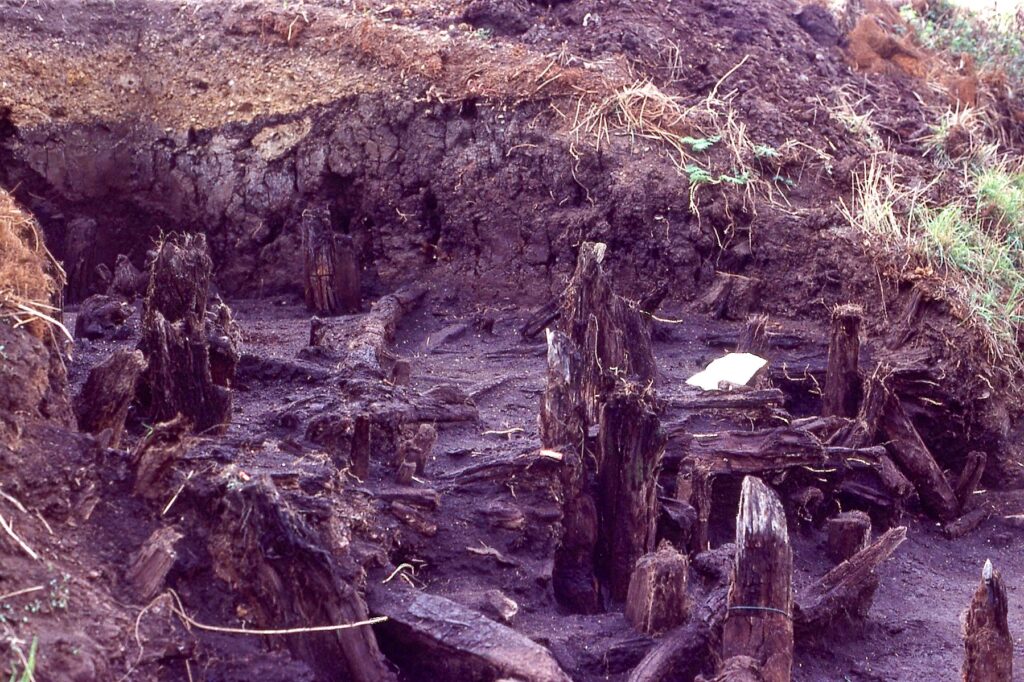
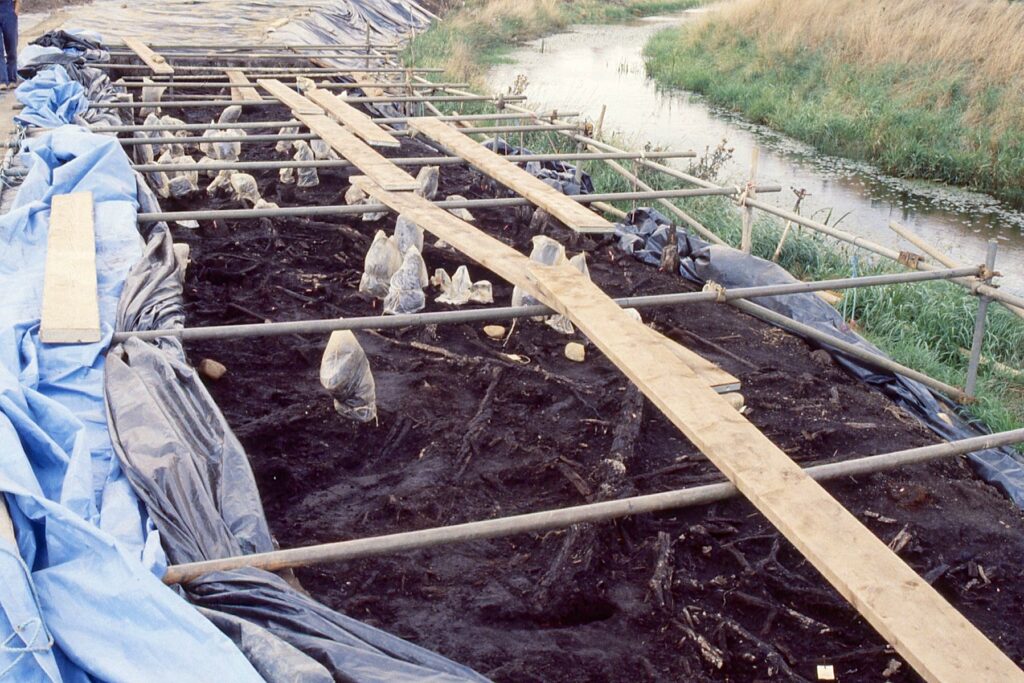
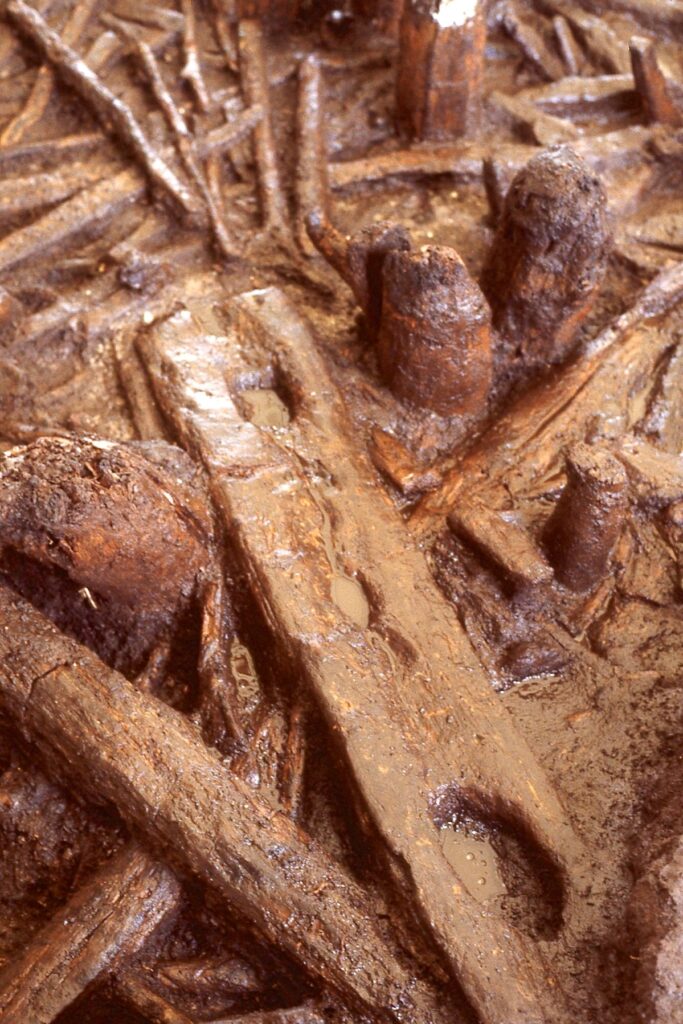
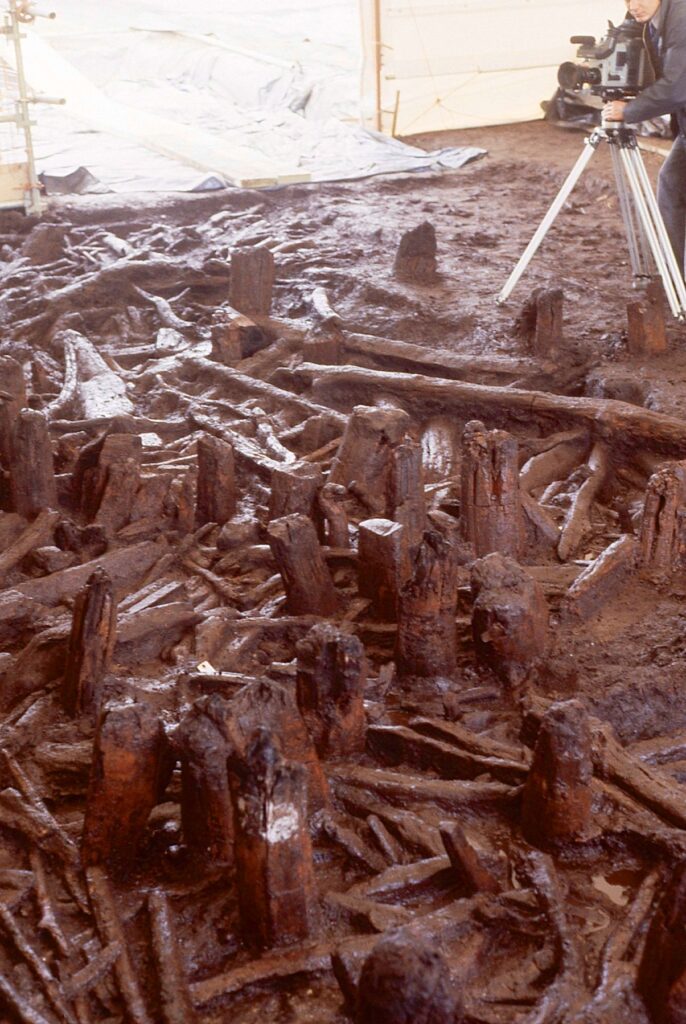
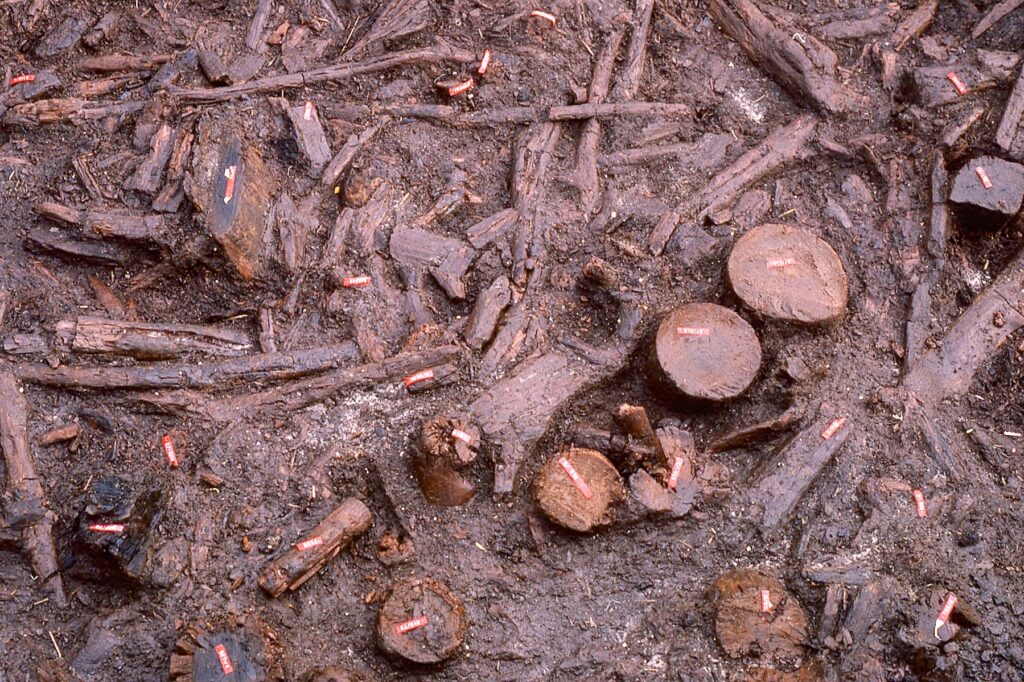
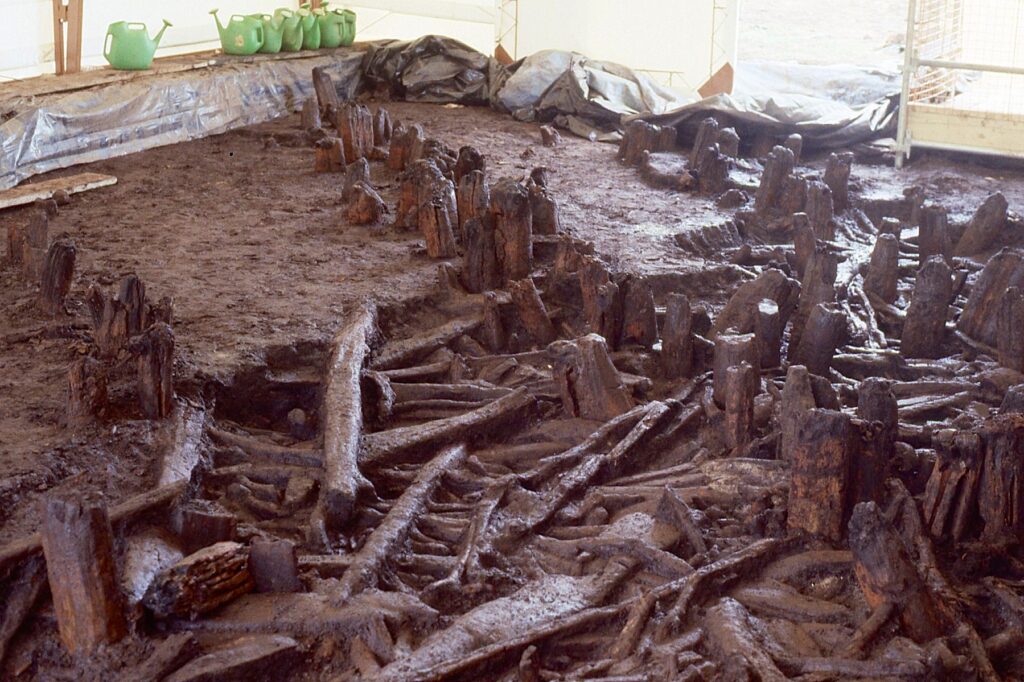
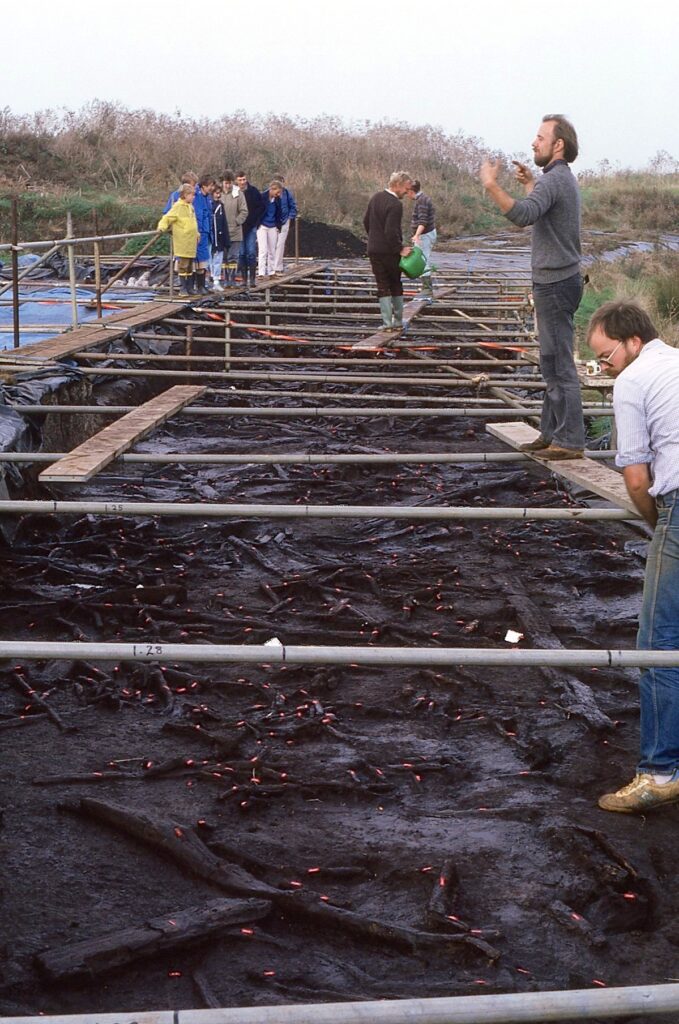
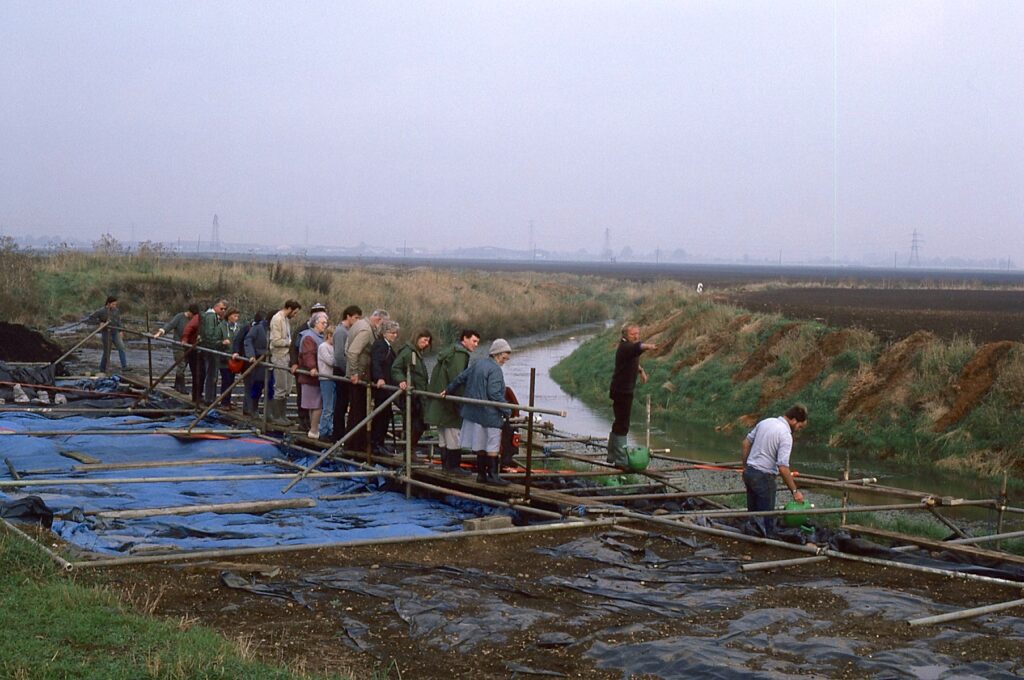
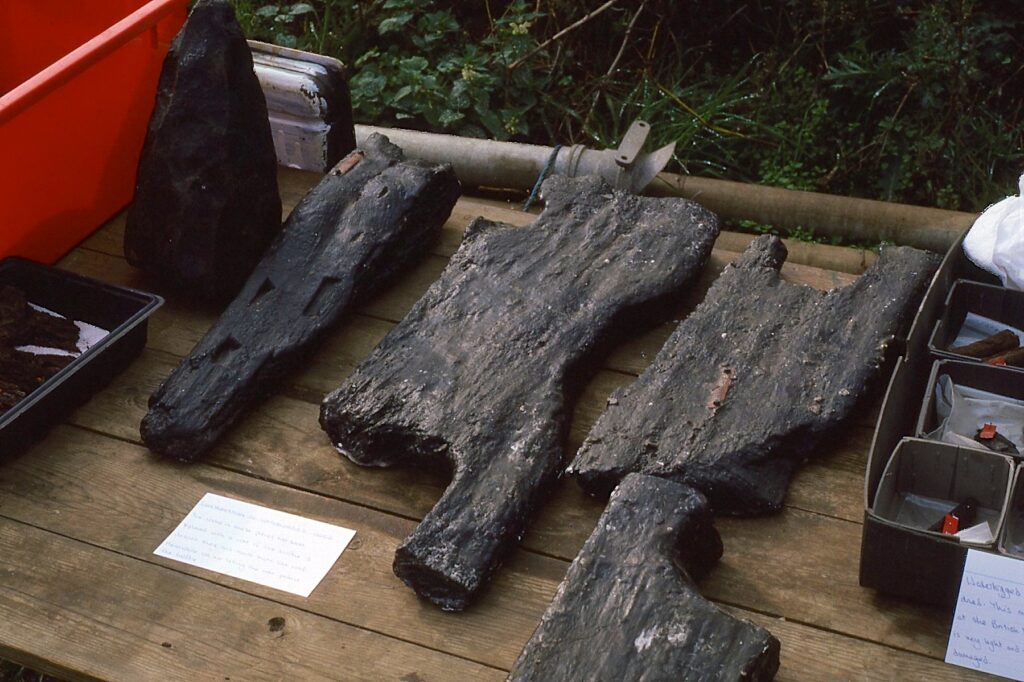
Pryor, F., C. French & M. Taylor, 1986. Flag Fen, Fengate, Peterborough I: Discovery, Reconnaissance and Initial Excavation (1982-85). Proc Prehist Soc, 52, 1-24.
Pryor, F.M.M., 2001. The Flag Fen Basin. Archaeology and Environment of a Fenland landscape, London: Engl Heritage Archaeol Rep.
Pryor, F.M.M., 2005. Flag Fen. Life and Death of a Prehistoric Landscape, Stroud: Tempus.
Pryor, F.M.M. & M. Bamforth (eds.), 2010. Excavation and research at Flag Fen, Peterborough, 1995-2007, Oxford: Oxbow Books.
Scaife, R.G., 1992. Flag Fen: the vegetational environment. Antiquity, 66, 462-6.